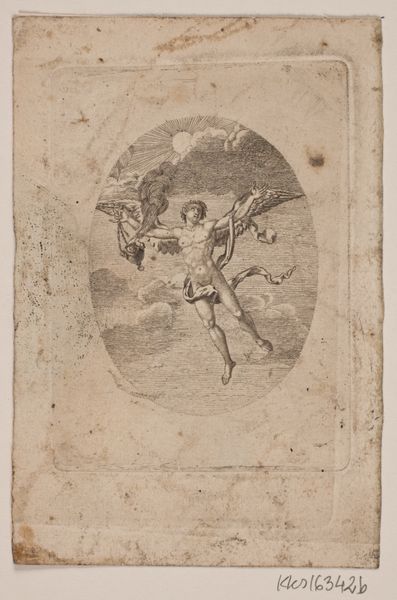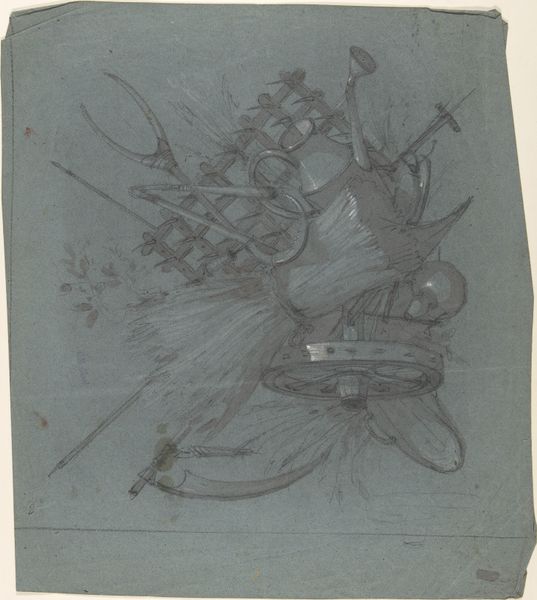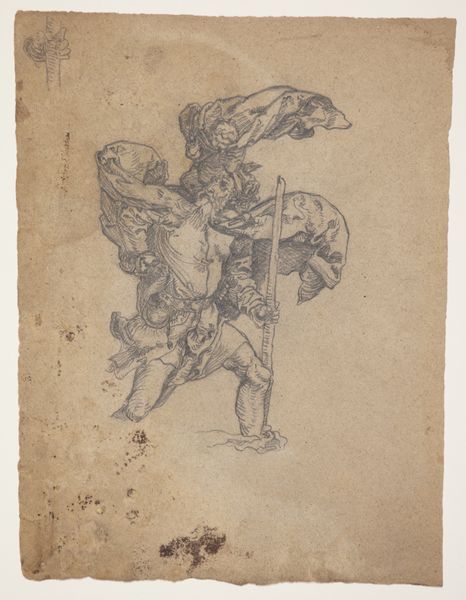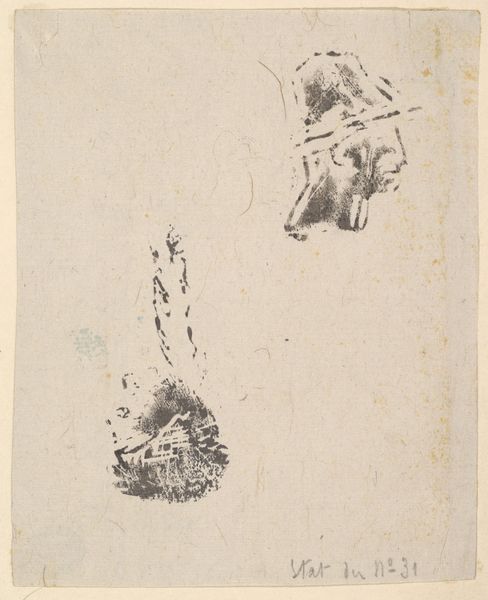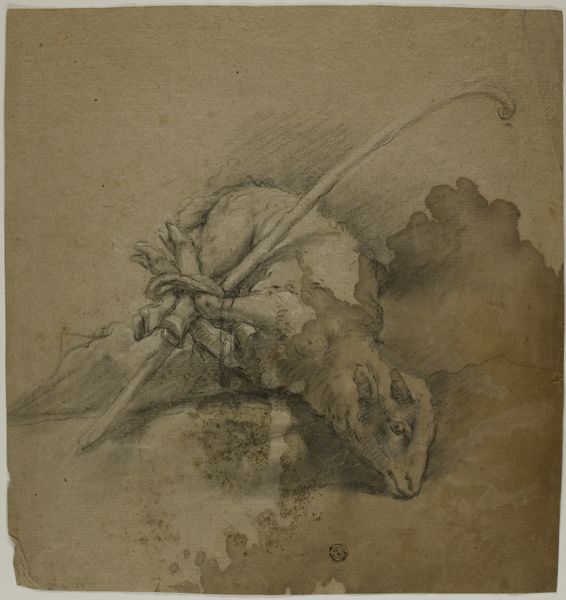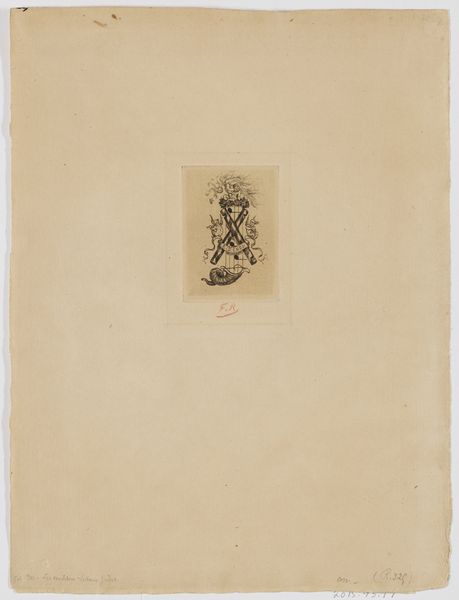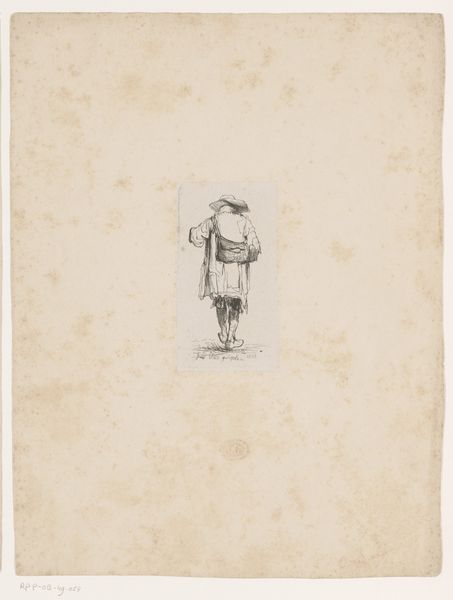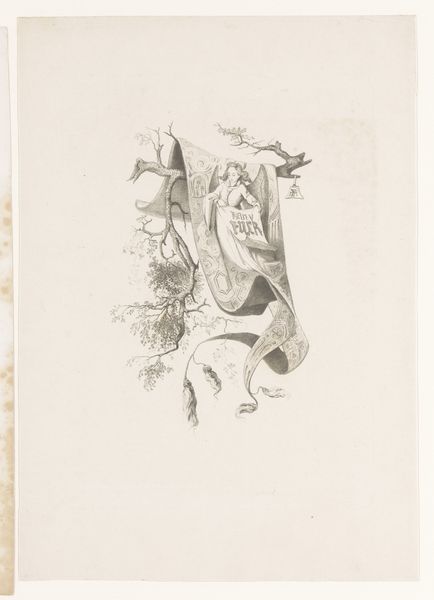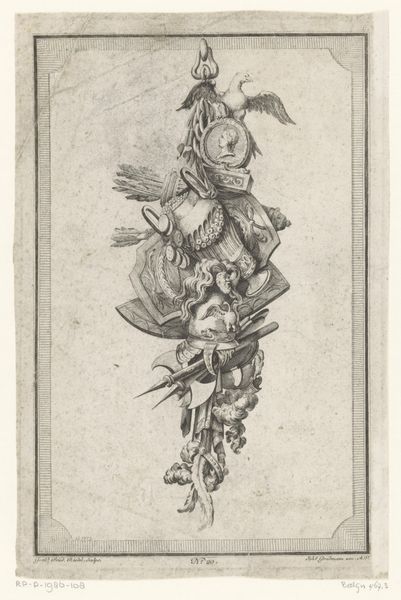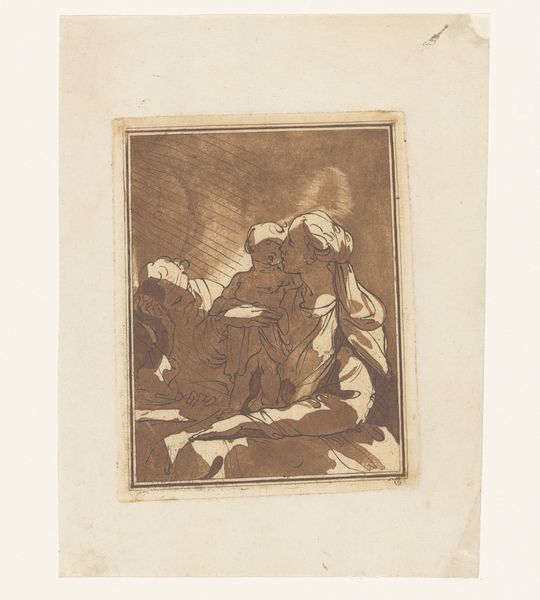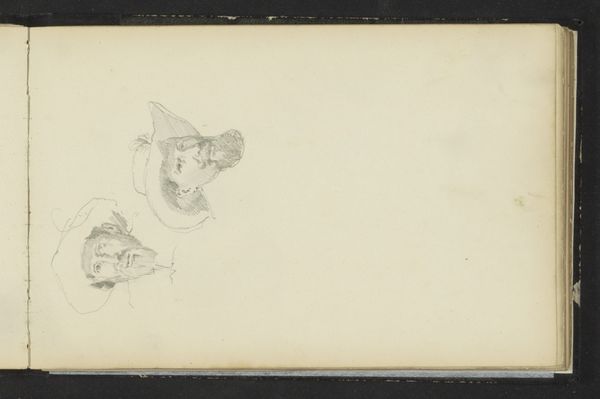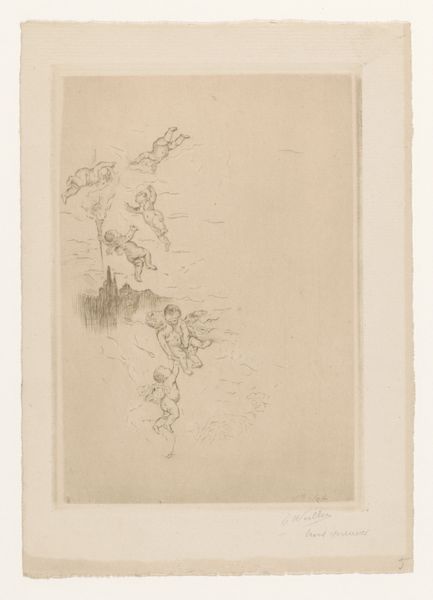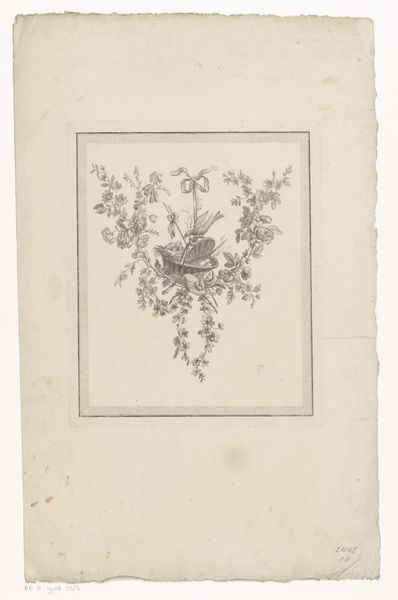
Dimensions: 88 mm (height) x 63 mm (width) (plademaal)
Editor: Here we have "Svævende engel", or "Floating Angel," an engraving by Gerhard Ludvig Lahde, created sometime between 1765 and 1833. The delicate lines create a sense of ethereal lightness. How would you interpret this piece, focusing on its form? Curator: Let's begin with the formal elements. The composition is dominated by the central figure, framed within an implied oval. Note the dynamic diagonals created by the angel’s pose and the billowing fabric. These create a sense of movement. How does the contrast between light and shadow affect your reading of the form? Editor: I think the limited contrast contributes to the overall ethereal feeling, as I mentioned. It makes the figure seem less grounded and more like a spirit. It’s interesting how the artist uses such fine lines to define form and texture. Curator: Precisely. The texture, achieved through varied line density, builds the illusion of depth. And consider how the lack of stark tonal shifts flattens the pictorial space, focusing attention on the figure's silhouette and pose. It highlights the elegance of line and shape over a more naturalistic rendering. Editor: That’s a really insightful point. I hadn't considered the flattening effect contributing to the ethereal mood, alongside the engraving technique. Curator: Formal analysis allows us to decode meaning. The composition invites us to think about balance between form and content. It showcases the elegance achievable through form and engraving methods. Editor: It's interesting to view it in terms of line and texture rather than just the subject matter. Thanks, that changed my perspective. Curator: It helps refine your understanding to view form through a variety of frameworks, allowing one to engage beyond its obvious representative context.
Comments
No comments
Be the first to comment and join the conversation on the ultimate creative platform.
